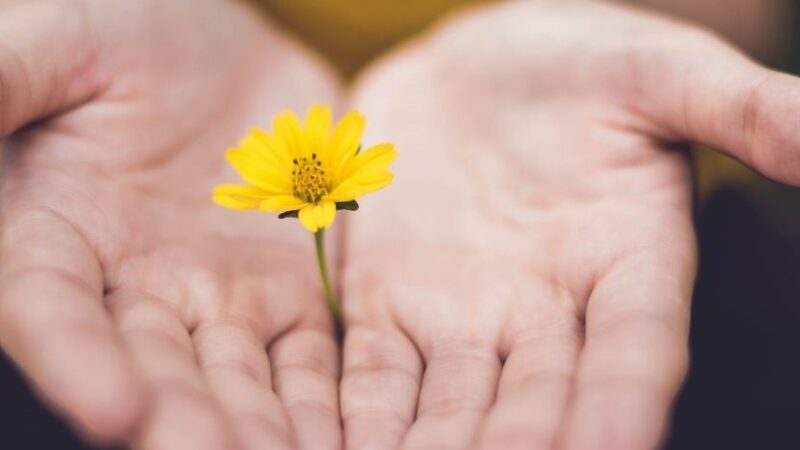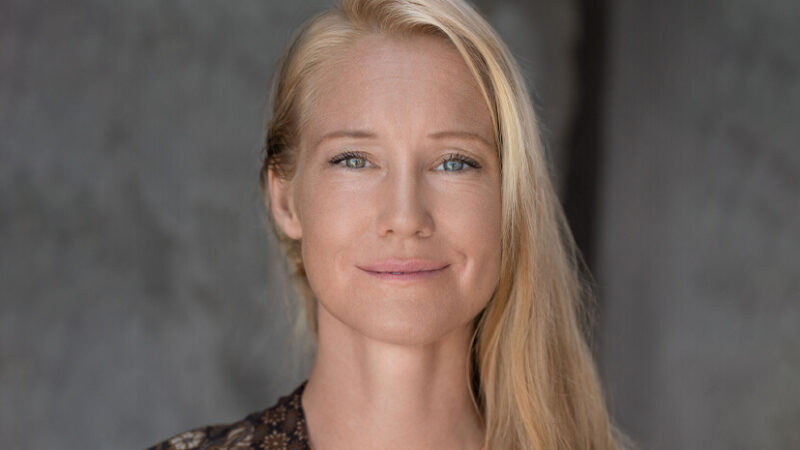-
E117: The Real Work: Letting Go from Within
Michael Singer — October 2, 2025
True spirituality isn’t about mystical experiences or lofty ideals—it’s about honestly facing...
-
Once More: Reflections on Reincarnation and the Gap Between Lives
Tami Simon — September 26, 2025
In this special reflection episode of Insights at the Edge host Tami Simon looks back on her...
-
Honey Tasting Meditation: Build Your Relationship with Sweetness
There is a saying that goes “hurt people hurt people.” I believe this to be true. We have been...
Written by:
Amy Burtaine, Michelle Cassandra Johnson
-
Many Voices, One Journey
The Sounds True Blog
Insights, reflections, and practices from Sounds True teachers, authors, staff, and more. Have a look—to find some inspiration and wisdom for uplifting your day.
Standing Together, and Stepping Up
Written By:
Tami Simon -
The Michael Singer Podcast
Your Highest Intention: Self-Realization
Michael Singer discusses intention—"perhaps the deepest thing we can talk about"—and the path to self-realization.
This Week:
E116: Doing the Best You Can: The Path to Liberation -
Many Voices, One Journey
The Sounds True Blog
Insights, reflections, and practices from Sounds True teachers, authors, staff, and more. Have a look—to find some inspiration and wisdom for uplifting your day.
Take Your Inner Child on Playdates
Written By:
Megan Sherer
600 Podcasts and Counting...
Subscribe to Insights at the Edge to hear all of Tami's interviews (transcripts available, too!), featuring Eckhart Tolle, Caroline Myss, Tara Brach, Jack Kornfield, Adyashanti, and many more.
Most Recent
3 Ways to be in Financial Integrity this Holiday Seaso...
In the whirlwind of holiday parties, gift-giving, and cooking, you can lose your grip on financial integrity faster than slipping on ice. But, your integrity is essential to your happiness and your self-worth. Here are a few easy ways to regain your center and empower your choices to give from your heart instead of your wallet.
Treasure Connectivity
When your presence is truly a gift to others, you won’t find yourself needing to overspend. Practice loving presence with the little interactions you have through the day. Slow down. Listen more. Smile more. Appreciate the uniqueness of the person in front of you. When you treasure connectivity, you won’t find yourself spending money on things that aren’t in alignment with your values.
Affirm Your Unique Values & Convictions
Speaking of aligning to your values … what are YOUR values? What do you value about the holidays? About gifting? About receiving? About money? Take a minute and write down your values and your convictions about the holidays. Read your convictions before bed, and upon arising. You’ll be more likely to live up to your convictions with money. And when you don’t, you’ll be very clear exactly what value you violated. When that happens, stop. Notice. Course correct.
Gift from Your Values
Whether you’re baking cookies or filling stockings, make each an act in alignment with your convictions. At first you may be aware of how your extended family or friends have different trends, values, or convictions. That’s ok. Notice. And be YOU. Be in your integrity. Make your people paleo gingersnaps or whatever you find nourishing and delightful. Tell your people why you gift how you gift. They love you for being you. And you being you will help them find their own financial integrity.
 Cate Stillman has been teaching audiences how to create health and wellness through yoga and Ayurveda since 2001. She is the author of Body Thrive, and hosts the Yogahealer Real Thrive Show, a weekly podcast featuring dozens of experts in the field. She splits her time between the Idaho border country and Mexico.
Cate Stillman has been teaching audiences how to create health and wellness through yoga and Ayurveda since 2001. She is the author of Body Thrive, and hosts the Yogahealer Real Thrive Show, a weekly podcast featuring dozens of experts in the field. She splits her time between the Idaho border country and Mexico.
4 Ways to Practice Gratitude This Holiday Season
The holiday season can be hectic and overwhelming, with many mixed emotions, from excitement to stress. It’s the perfect time to commit to a daily practice of gratitude which will help you experience more moments of contentment and joy and give you resilience to handle the many challenges (including travel and stressful relatives). And when you share your gratitude with others, you help them feel seen, valued, elevated, and help yourself feel more closely connected to people in your life. Here are four ways to practice gratitude this holiday season.
Say Thank You and Mean It
When you thank someone, be intentional about it and put your heart and appreciation into your words. Take a moment, pause, look them in the eye, smile, and say ‘Thank you’. If there is something specific you want to thank them for, do it, go the extra step, that’s awesome.
Daily Gratitude Bookends
Begin and end your day by writing down a few things you’re grateful for. Literally bookend your day with gratitude. If you’re not a journaling type, that’s fine—how about sharing what you’re grateful for with someone else, like a family member, friend, or co-worker—in-person or via text or email. You won’t just be practicing gratitude for yourself but inspiring them to do it also. Remember to be as specific as possible and don’t neglect really small moments.
Gratitude Zoom
If you’re feeling down or caught in a negativity spiral, pause and challenge yourself to find something you can appreciate within your experience, however small. For example, if you’re sad about being sick and missing out on what you would rather be doing, can you feel grateful that you have medicine or a comfortable place to recover or people around to help care for you?
Gratitude Antidote
When something stresses you out—too much traffic, an annoying colleague, etc.—use it as a reminder to practice gratitude. You don’t have to be grateful for whatever is stressing you out, but use it as a nudge to pause, take a breath, and think of something, however small, that you are grateful for in that moment. When you do this, you prevent your brain from going into a negativity spiral, where one annoying thought brings on another, and another, and another, until you have a really rough day.
 Nataly Kogan is an author (Happier Now), speaker, and the founder of Happier. Her work has been featured in hundreds of media outlets, including the New York Times, the Wall Street Journal, TEDx Boston, SXSW, and Dr Oz. Nataly lives with her husband and daughter in Boston. For more, visit happier.com.
Nataly Kogan is an author (Happier Now), speaker, and the founder of Happier. Her work has been featured in hundreds of media outlets, including the New York Times, the Wall Street Journal, TEDx Boston, SXSW, and Dr Oz. Nataly lives with her husband and daughter in Boston. For more, visit happier.com.
3 Ways to Set Clear Boundaries to Enjoy This Holiday S...
One of the things that get us so stressed out during the holiday season is the Must Do list, the unending expectations, the anxiety that comes when we feel we’ve let people down. But it doesn’t have to be that way. The holidays can literally be Holy Days, when you feel the love and light of family, friends, community and the shared gratitude of celebration.
Here are a few ways that Energy Medicine Yoga can help you this season.
Knowing the right way to say “No”
You know you want to say No, but you don’t know how. Before you say Yes, and add one more thing to an already full plate, take a moment in silence. Tune in and see what you really want to do. Then take one hand and draw big figure 8’s all along your throat. This is the home of the 5th chakra, where you speak your truth. The figure 8’s will help you find more clarity and ease with what can be a difficult answer.
Keep your own energies intact with the Zip Up
When you’re around a lot of people, you can take on the energies of everyone around you and start to feel like you’re losing your own self. Bring your hands in front of your pubic bone, set an intention to stay calm and true to yourself, and sweep your hands up your body and over your head. Do this two more times.
Calm down your stress response with this ‘hug’
Holidays can be stressful, and your body will respond to that. You can balance the stress response with the ‘inner mom’ by doing the Spleen hug. Hug one hand around your waist, hug the other hand around the opposite elbow. You can stand like this around the punch bowl, and feel calm and grounded so you can enjoy the holiday chaos!
 Lauren Walker is the author of The Energy Medicine Yoga Prescription (Sounds True, Sept 2017) and Energy Medicine Yoga: Amplify the Healing Power of Your Yoga Practice (Sounds True, 2014). She’s been teaching yoga and meditation since 1997 and created Energy Medicine Yoga while teaching at Norwich University. She teaches EMYoga across the US and internationally and has been featured in Yoga Journal, Mantra Yoga + Healing, Yoga Digest, and The New York Times. She was recently named one of the top 100 most influential yoga teachers in America by Sonima. For more information, visit EMYoga.net.
Lauren Walker is the author of The Energy Medicine Yoga Prescription (Sounds True, Sept 2017) and Energy Medicine Yoga: Amplify the Healing Power of Your Yoga Practice (Sounds True, 2014). She’s been teaching yoga and meditation since 1997 and created Energy Medicine Yoga while teaching at Norwich University. She teaches EMYoga across the US and internationally and has been featured in Yoga Journal, Mantra Yoga + Healing, Yoga Digest, and The New York Times. She was recently named one of the top 100 most influential yoga teachers in America by Sonima. For more information, visit EMYoga.net.
The community here at Sounds True wishes you a lovely holiday season! We are happy to collaborate with some of our Sounds True authors to offer you wisdom and practices as we move into this time together; please enjoy this blog series for your holiday season.
To help encourage you and your loved ones to explore new possibilities this holiday season, we’re offering 40% off nearly all of our programs, books, and courses sitewide. May you find the wisdom to light your way.
Customer Favorites
Emilia Elisabet Lahti: Sisu: Embodying Gentle Power
How do we find the strength to keep going when it feels like there’s nothing left inside of us? The Finnish philosophy of sisu shows us a new way to look at power and perseverance—not as force and domination but as the harmonious expression of human character in everyday actions. In this podcast, Tami Simon speaks with Dr. Emilia Elisabet Lahti about her work leading the world’s first empirical research on sisu and her new book, Gentle Power: A Revolution in How We Think, Lead, and Succeed Using the Finnish Art of Sisu.
Give a listen to this inspiring discussion of the embodiment of internal fortitude and wisdom known as sisu; how adversity provides an opportunity for resiliency; post-traumatic growth and positive psychology; the difference between sisu and grit; the visceral, somatic nature of sisu; taking risks instead of giving in to fear of failure; experiencing an initiation into your own strength; life—an ultramarathon we’re all running; flexibility, reason, and the choice to be gentler on yourself; finding harmony between the hard and the soft; journaling your own stories of sisu; self-forgiveness; looking to the future with an action mindset; transforming challenges into the fuel to keep you going; tapping into the intelligence of your body; sisu, leadership, and being kind versus being nice; and why developing sisu is so important for humanity at this time.
Presence Through Movement
Tami Simon speaks with Kim Eng, a counselor, spiritual teacher, and Eckhart Tolle’s life and teaching partner. Kim’s “Presence Through Movement” workshops focus on the integration of mind, body, and spirit. With Sounds True, she has created two Presence Through Movement DVD programs, as well as the audio programs Meditations for a New Earth and Resist Nothing. In this episode, Tami speaks with Kim about what Eckhart Tolle calls the pain-body—an accumulation of the pain and unresolved emotions of our past that can take on a life of its own—and how we can dissolve it through movement. She also spoke about discovering our inner aliveness, and how we can stay present through grief and loss. (51 minutes)
Jacqueline Freeman: Listening to the Wisdom of Honeybe...
Jacqueline Freeman is a biodynamic farmer and natural beekeeper who speaks internationally on organic beekeeping, women in agriculture, and cultivating a more holistic relationship with nature. With Sounds True, she has published the book Song of Increase: Listening to the Wisdom of Honeybees for Kinder Beekeeping and a Better World. In this episode of Insights at the Edge, Tami Simon and Jacqueline discuss the unique unity consciousness of bees and how understanding their perspective opens up profound new views of existence. They talk about the challenges facing bees in the modern world and why thriving beehives are essential for a healthy ecosystem. Finally, Jacqueline describes her ability to communicate with bees, the messages she has received from them, and the purpose of a bee’s life—from the bee’s perspective. (70 minutes)





